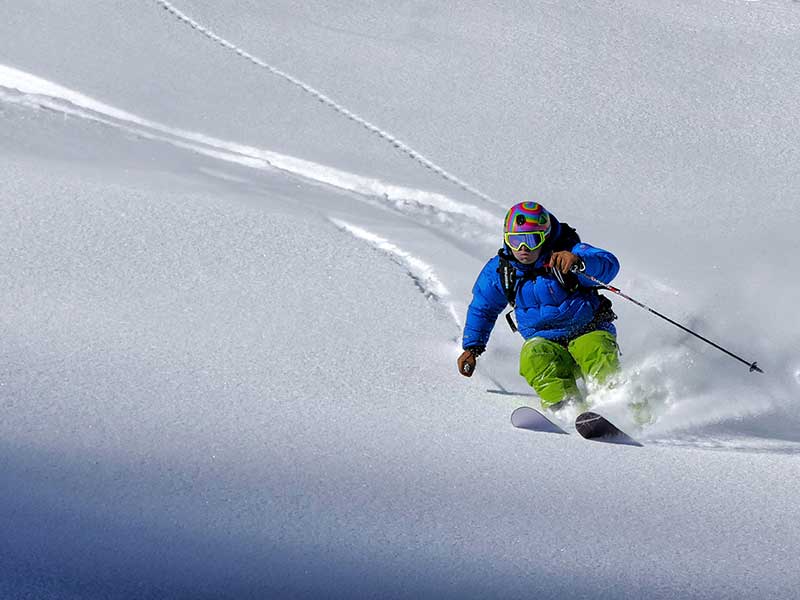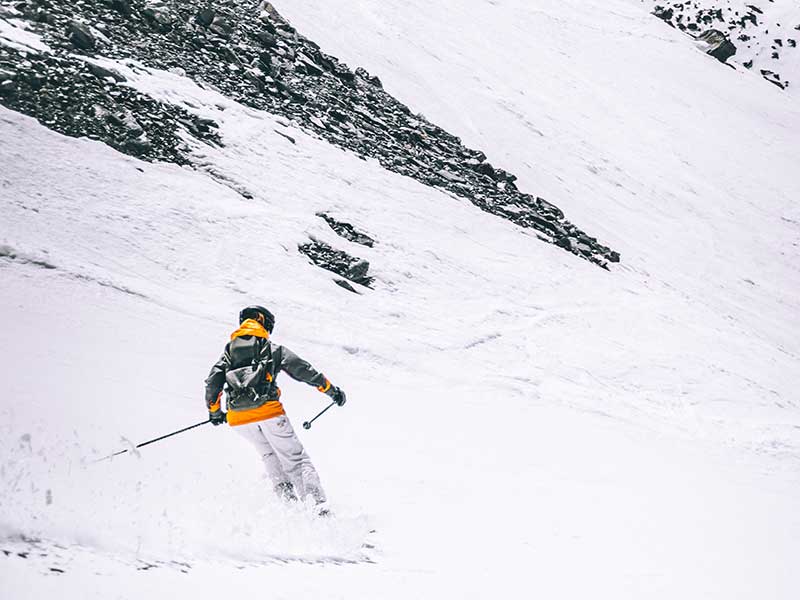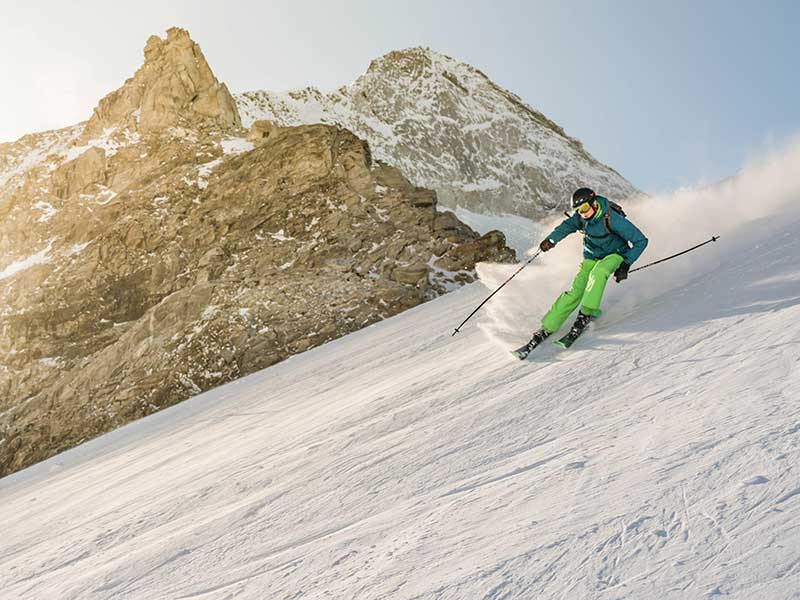How to ski in virgin snow

Few can enjoy a day's skiing in virgin snow. On the one hand, because this practice requires a fairly high technical level. Apart from the technical level, it also requires a high knowledge of the mountain. When it has recently snowed and the snow is in powder form, the risk of avalanches increases. The snow is not usually settled, so it is advisable to be vigilant. If you are fairly inexperienced in the matter, it never hurts to ask an expert for advice. If you can go out with him or her as well as ask for advice, it will be better for your safety.
On the other hand, to ski on virgin snow, you have to follow certain guidelines and a correct execution of movements on skis. Always remember that technique on powder snow is different from technique on hard or trodden snow. There are five essential technical gestures to bear in mind, and they are will be explained below.
Basic tips for skiing in powder snow.
However, it's a good idea to have a few basic notions before going skiing in virgin snow. Here are some of those tips:
- Beware of avalanches. If the snow has not yet settled, the risk of avalanches increases. Keep an eye on the snow forecast. Avoid avalanche-prone areas at all times. Do not be afraid to ask for advice.
- Choose the right type of ski. Powder snow can be of two types: powder snow with a bottom, or without a bottom. When you hit hard snow under the powder, it is advisable to use skis 5 to 10 centimetres smaller than your height. However, if you don't hit any bottom, you should choose longer skis in order to keep your balance. The skis of freeride are highly recommended.
- Go at an appropriate speed. There is no predetermined speed. You must choose your own. Never forget your technical limitations, and ski as safely as possible.
- Visualise the terrain. Powder snow can often be found off-piste. This terrain tends to be wilder and more complex, so you should always be on your toes. Concentrate and analyse the terrain where you are skiing. This way, you will be able to make turns with less urgency and greater safety.
- Stay balanced and focused. If you stay in the right position, the skis will not sink in the front or the back. Make sure the skis are right for you, and you have them properly adjusted.
YOU MAY BE INTERESTED IN: Ski technique: a complete guide to flying in the snow
5 technical gestures to take into account
Raise the inside foot
When making a turn, it is important to lift the inside foot. For example, if you are turning to the right, you should lift your right foot. Lightening the inside foot is important because this will help us to shift our body weight to the outside foot, making it easier to keep our balance.
In powder snow it is important to perform this movement well, as the lateral movements are constant in order to avoid sinking into the snow. With the outside foot firmly fixed in the snow, the turn can be successful.
The faster the lateral movement, the shorter the turn. To help improve the movement, it is advisable to turn the ankle of the inside leg a little. The movement consists of wanting to touch the snow with the outside of the foot. This will keep the point of gravity lower. Performing these movements correctly will make the turns considerably easier.

Putting feet together
When skiing in powder snow, both feet must be close together so that they work simultaneously and at the same level. This gives you the following advantages:
- With the skis close together it will be harder for you to sinkThis will keep you on the surface. However, don't worry if you sink a little, as this is normal with such light snow underfoot.
- With your feet together you can keeping the balance more easily. They will be able to work more independently. In other words, one can remain flexed, while the other is less bent.
Resist and do not push with your legs
One might think that the firmer you step on the snow, the easier it is to make turns. However, this is not true. When the snow accumulates under the skis, you have to stop pressing down, so that the snow itself pushes you to the surface. The sensation can be similar to that of a trampoline. You should always ski with your ankles, knees and hips slightly flexed to create a lightening effect. This will reduce fatigue.

Flexing the joints
During powder skiing you should always have your joints in a dynamic mode, but slightly flexed. This will make it easier to keep both feet at the same height. Ankles, knees and hips should be flexed to make turns and the transition between turns more comfortable. In addition, with the joints flexed, the body will better assimilate the bounces and blows one may receive.
Use the sticks properly
Poles are essential for making turns when skiing in powder snow. When skiing in powder snow, the sticks should always face downhill. When you put the clubs into the snow in the turns, don't let your arm go backwards. Let the stick go, but keep your arm steady.
If you strictly follow these basic notions for skiing in virgin snow, you are sure to have a satisfactory experience. Remember to ski calmly so that you can enjoy yourself as much as possible.
Don't miss any adventure in the Pyrenees!
